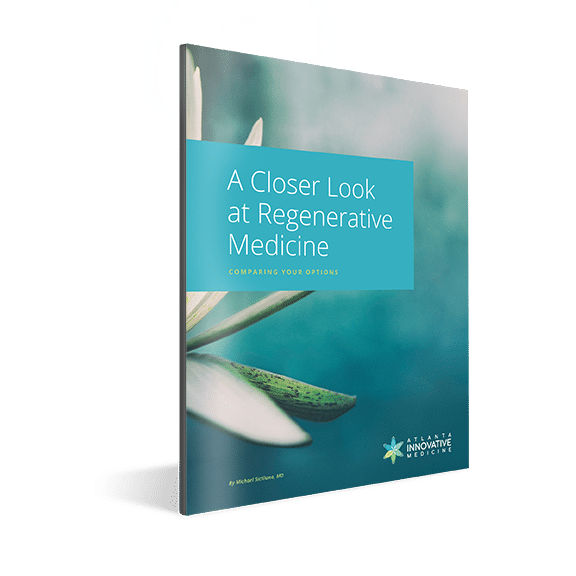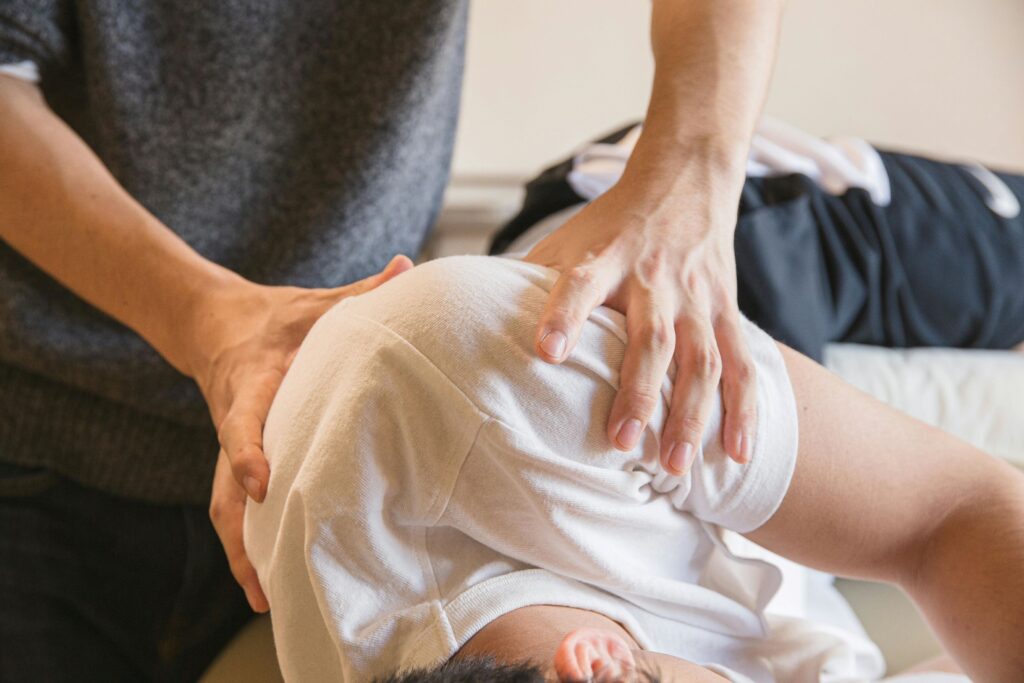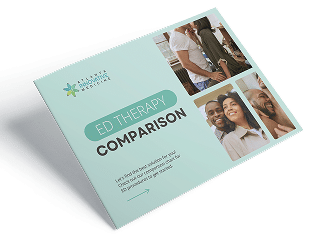By Farhan Malik, MD
Atlanta Innovative Medicine
If you’ve ever tweaked your shoulder, you know how much shoulder pain interferes with daily life. Shooting pain, dull aches, and decreased ability to move are all symptoms commonly associated with shoulder injury. In some cases, these symptoms can be the first stage of a more severe condition known as frozen shoulder, where shoulder movement becomes increasingly difficult and, sometimes, impossible without assistance. Frozen shoulder can affect anyone but tends to be more common in women over 40, those suffering from a rotator cuff disorder, and those living with existing conditions like thyroid disorders, diabetes, or Parkinson’s disease.
Frozen shoulder, known medically as adhesive capsulitis, is characterized by intense shoulder pain and severely limited mobility. It occurs when inflammation and scar tissue cause the connective tissue in the shoulder to thicken and tighten. Eventually, the shoulder “freezes,” with little to no mobility in the joint. The solution? Frozen shoulder thawing that focuses on increasing shoulder joint mobility and decreasing pain.
At Atlanta Innovative Medicine, we understand the frustrations of limited mobility and debilitating pain. In this article, we’ll dive into the treatment and stages of frozen shoulder. We’ll discuss traditional treatment strategies and what we recommend at AIM for frozen shoulder thawing and prevention.

Do these symptoms sound familiar?
Book an appointment to learn how we can help you identify and treat the cause of your symptoms.

Frozen Shoulder Thawing: How to Treat Your Shoulder Injury
It’s important to understand that frozen shoulder can have many causes. It can come on quickly, even overnight, or gradually due to immobilization from illness or injury. Regardless of the initial cause, frozen shoulder progresses through three stages: freezing, frozen, and thawing. It’s during the thaw that mobility finally increases, and pain recedes.
Traditionally, doctors recommend a corticosteroid injection into the shoulder coupled with physical therapy to thaw a frozen shoulder. At AIM, we understand that while steroids demonstrate a certain level of efficacy, they result in adverse side effects in up to 90% of patients and often only treat the pain rather than the pain and the cause.
We recommend Prolotherapy or Prolozone therapy instead of steroids for frozen shoulder thawing. In recent case reports, initial treatment for frozen shoulder with prolotherapy and physical therapy showed benefits such as rapid improvement in range of motion, significant pain reduction, and improved quality of life. In these cases, Prolotherapy also provided adequate pain management through every stage of frozen shoulder until the patient fully recovered.
Frozen Shoulder Thawing with Prolotherapy or Prolozone therapy
Unlike corticosteroid injections, Prolotherapy and Prolozone therapy work by alleviating pain and stimulating the body to fix the damage that’s causing shoulder stiffness. While both therapies work to manage pain and kick-start the body’s natural healing processes, there are some critical differences between them.
Prolotherapy involves the injection of a natural irritant, such as sugar, which triggers your immune system to react against the irritant as if it were an injury. It attempts to heal damaged shoulder tissue, bringing growth factors and increasing blood flow that provides oxygen and nutrients to the area. It spurs your body to strengthen and repair the damaged ligaments in the shoulder joint, increasing flexibility and alleviating pain.
Prolozone therapy uses localized ozone injections to help your body’s own restorative mechanisms to reconstruct deteriorated or damaged connective tissues in the shoulder. It creates the blood flow needed to reduce shoulder inflammation, allowing nutrients to reach the injury and triggering collagen production. Essentially, Prolozone therapy gives your body the tools it needs to thaw frozen shoulder, working to reduce inflammation and increase range of motion.
Both treatments can be effective in overall frozen shoulder thawing when combined with physical therapy. With the variety of regenerative treatments and traditional therapies offered at our clinic, you can trust our team of experts at AIM for an accurate diagnosis and a treatment plan specifically tailored to your shoulder pain.

Subscribe for Expert Insights and Our Ebook
A Closer Look at Regenerative Medicine: Comparing Your Options Learn about treatment options like Platelet Rich Plasma (PRP), Prolozone Therapy, and Stem Cell Therapy.
Frozen Shoulder Thawing: How to Accelerate Healing at Every Stage
Just as each patient is unique, each stage of frozen shoulder thawing is unique. Every stage comes with its own challenges, and at AIM, our expert medical team is here to guide you through treatment tailored for you.
This stage is characterized by the onset of pain, which can be gradual or fast and is often the most painful of the three stages. Patients still have some range of motion, but it is increasingly limited.
Treatment goals during freezing are to reduce pain and begin to increase flexibility in the tendons and ligaments in the shoulder by repairing damage. Physical therapy focuses on gentle frozen shoulder stretches, lasting only a few seconds, that do not push beyond your pain threshold. During this stage, Prolotherapy or Prolozone therapy may be used to kick-start the body’s natural healing processes, increase oxygen flow and nutrients to the affected shoulder, and alleviate pain.

This stage tends to be less painful than freezing, as mobility is severely limited. Patients may be unable to move their arms at all without assistance. Patients in this stage often ask us if they can somehow “pop” their shoulder to regain movement. Unfortunately, there’s no quick, “pop” fix for frozen shoulder. How quickly you progress through this stage depends on your adherence to your treatment program and other health factors.
When a shoulder is frozen, the treatment goals expand to include more focus on maintaining and increasing muscle strength while continuing to increase flexibility. Physical therapy focuses on continued stretching coupled with frozen shoulder exercises, including exercises for external shoulder rotation and strengthening through scapular retraction. Depending on your pain level and how shoulder ligaments and tendons are healing, your doctor may recommend continued Prolozone therapy, Prolotherapy, or another regenerative treatment in this stage.

Increased range of motion and improved stiffness are the most significant signs that frozen shoulder is starting to thaw. In short, you have truly begun to heal. At this stage, physical therapy exercises increase in intensity and duration. The goal is to continue building your range of motion while maintaining balanced muscles. Increased strength and flexibility during the thaw supports healing and helps prevent a future freeze. Depending on pain levels and progress, your doctor may continue Prolotherapy, Prolozone therapy, or another regenerative treatment during this stage and for ongoing shoulder maintenance.

Frozen Shoulder Thawing Dos and Don’ts
Because frozen shoulder is easily exacerbated by daily living, it’s important to consider how to take extra care to support your healing. As you progress through the stages of frozen shoulder, pay attention to these dos and don’ts to ensure the fastest, most complete healing:
Do:
- Work with a specialized and dedicated medical care team as you progress through the stages of frozen shoulder.
- Communicate your pain levels and tolerance for movement clearly. This helps your team create the perfect plan for you.
- Use hot and cold therapy as directed and tolerated.
- Assigned exercises exactly as directed by your care team, both at home and in the office.
Do Not:
- Overdo it on over-the-counter pain relievers, as this can lead to organ damage and other adverse health effects.
- Force movement you’re not ready for, especially overhead lifting and reaching. We get it; limited mobility is frustrating, especially when it interferes with daily life, but thawing a frozen shoulder takes time. Don’t push it.

Should I use hot or cold therapy for frozen shoulder?
Our answer: it depends! Cold therapy relieves pain by reducing inflammation, while heat therapy loosens stiffness to increase pain-free range of motion. While both can be effective for pain management, many patients with frozen shoulders report that between the two, applying mild heat helps reduce symptoms the most.
The best treatment depends on the specific patient and the frozen shoulder stage. However, the standard protocol for heat therapy is applying a warm, damp compress or taking a warm shower, and the standard protocol for cold therapy is using an ice pack on your shoulder for 10 to 15 minutes several times daily. Your doctor will help you decide which, if either, is best for your symptoms.

Frozen Shoulder Thawing & Prevention At Atlanta Innovative Medicine
AIM prides itself on our multidisciplinary pain treatment and prevention approach. We prioritize accurate diagnosis and root cause treatment, recognizing that each patient’s condition is unique and requires personalized care. By utilizing advanced diagnostic techniques, we help uncover underlying issues contributing to frozen shoulder, allowing us to tailor our treatment approach accordingly.
Our treatment plans often combine a variety of noninvasive management strategies to address the symptoms and underlying causes of conditions like frozen shoulder. Initial treatment for frozen shoulder will likely include a combination of physical therapy and Prolotherapy or Prolozone therapy, alongside other therapeutic and regenerative techniques that strengthen the body’s inherent ability to heal itself.
Our ultimate goal is to empower our patients to take control of their health and wellbeing. Whether you suspect frozen shoulder or are experiencing other forms of pain, our multidisciplinary clinic is here to help. Our team of experts provides comprehensive care that focuses on both proactive and responsive treatment so you can get back to living fully.
Contact us today to schedule a consultation and take the first step towards a fully healed shoulder and pain-free future.
Quizzes
Are you a candidate for Regenerative Medicine?
Regenerative medicine can be an effective therapy and treatment option for lasting pain relief for a variety of conditions like osteoarthritis of the knee, hip or shoulder; ACL or meniscus tears; tennis or golfer’s elbow; chronic neck and back pain; and more.
Is it right for you and your condition? Take 1 minute to answer a few “yes or no” questions that help to assess if you might be a candidate for PRP, stem cell or other nonsurgical regenerative treatments.
Are You a Stem Cell Candidate for Your Joint or Spine Damage?
Are you a candidate for Platelet Rich Plasma (PRP) Therapy?
Do I have nonsurgical options for my injured or aging joints?
Take the Pain Medications Risk Quiz

Regenerative Medicine.
Reimagined
- Advanced hybrid therapies, including Mesenchymal Stem Cell therapy combined with different mechanisms of action that synergistically come together to support ultimate healing
- More powerful PRP that’s customized, amplified and personalized
- Therapies delivered by an experienced, compassionate team comprised of multidisciplinary experts in traditional and alternative medicine working as your team: Medical Doctors, Nurse Practitioners, Physiotherapists and Chiropractors
- Advanced training through the American Academy of Orthopedic Medicine, the American Osteopathic Association of Prolotherapy Regenerative Medicine, and more
All content of this page is for informational purposes only and is not intended to serve as a substitute for the consultation, diagnosis, and/or medical treatment of a qualified physician or healthcare provider. Individual results may vary. Your medical professional can explain all the risks and potential benefits of any therapy based on your specific circumstances. At this time regenerative therapies are not FDA approved. Neither Atlanta Innovative Medicine nor its physician affiliates promise regenerative therapies as a cure for any condition, disease, or injury.
Other Atlanta Areas We Service:
© 2024 Atlanta Innovative Medicine, LLC. All Rights Reserved. AIM Scholarship Opportunity








